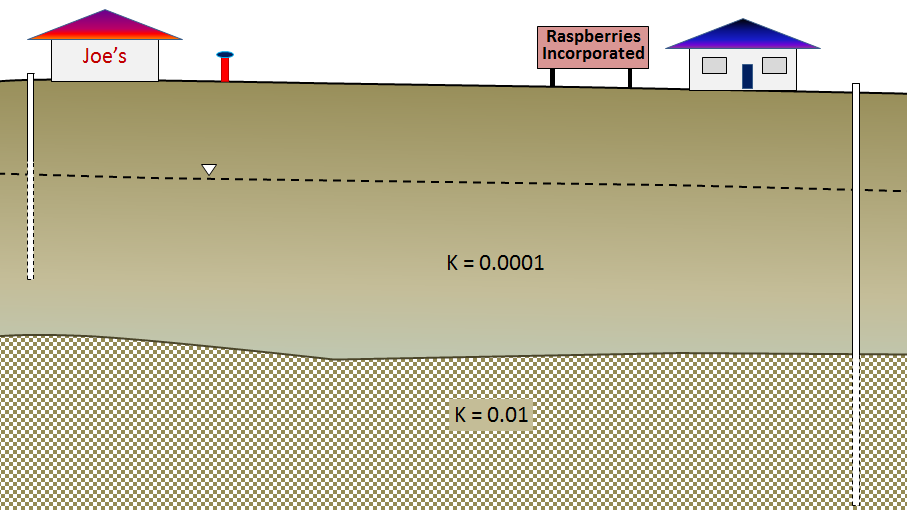110 Summary — Physical Geology – 2nd Edition

- What type of aquifer does Sue use?
- What type of aquifer does Frank use?
- It seems that what Sue calls an aquifer is an aquitard (confining layer) from Frank’s perspective. How is that possible?
Two wells 70 metres apart have water levels of 77 metres and 83 metres above sea level respectively. The aquifer has a hydraulic conductivity of 0.0003 metres per second and a porosity of 20%. What is the likely velocity of groundwater flow in the region between these two wells?
The well in question 5—with a water level of 83 metres—is heavily used and after several months the water level has dropped by 9 metres. How will that affect the flow of groundwater in the area between the two wells?
Explain why it is important for provincial governments to operate observation well networks.
What is the main difference between natural and anthropogenic contamination of groundwater?
Why is a highly permeable aquifer more vulnerable to anthropogenic contamination than a less permeable aquifer?
How can a livestock operation lead to contamination of groundwater? What is the most likely contaminant?
Which mineral in the rock of a mining operation is typically responsible for acid rock drainage?
Why is it necessary to test the permeability of the soil before constructing a septic field?
Media Attributions
- Figure A: © Steven Earle. CC BY.
<!– pb_fixme –>
<!– pb_fixme –>

